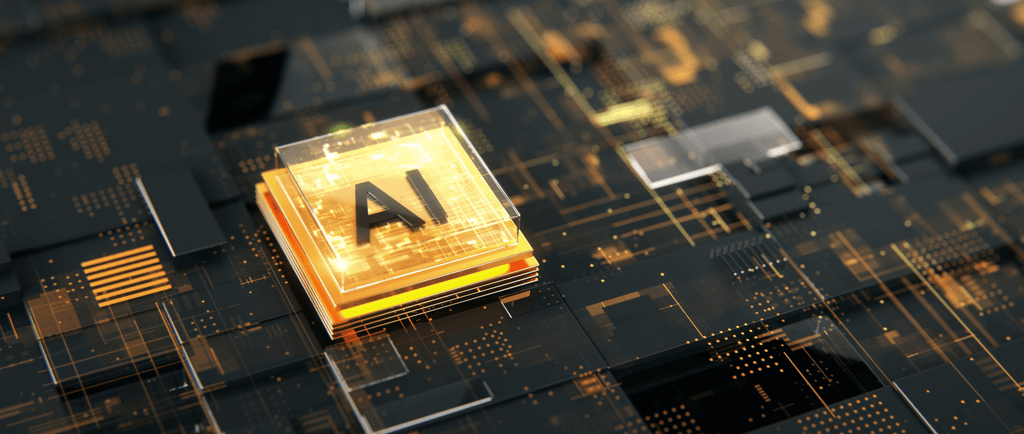Go2JoJo.com Blog Post - How Do Algorithms Work with AI?
A Symbiotic Relationship
JoEllen Caruana
4/16/20253 min read


How Do Algorithms Work With AI? A Symbiotic Relationship
Artificial Intelligence (AI) is rapidly transforming our world, impacting everything from healthcare and finance to entertainment and transportation. But behind the captivating power of AI lies a fundamental concept: algorithms. Understanding how algorithms work with AI is crucial to grasping the true potential and limitations of this transformative technology. They aren't simply separate entities; they exist in a symbiotic relationship, with algorithms serving as the essential building blocks that enable AI to learn, reason, and solve complex problems.
Essentially, an algorithm is a set of well-defined instructions that a computer follows to achieve a specific outcome. Think of it like a recipe: a series of steps leading to a delicious cake. In the context of AI, algorithms are the driving force behind a machine's ability to process information, identify patterns, and make decisions. Without them, AI would be nothing more than a collection of hardware.
The Algorithm: AI's Foundation
Algorithms provide the framework for AI systems to function. Here are a few key roles they play:
Data Processing: AI systems are fed massive amounts of data. Algorithms are used to clean, organize, and transform this raw data into a usable format. This pre-processing is critical for the AI to learn effectively.
Pattern Recognition: Algorithms are designed to identify patterns and relationships within data. For example, in image recognition, algorithms analyze pixel arrangements to identify objects like faces or cars.
Decision Making: Algorithms enable AI systems to make decisions based on the patterns they identify. This is central to applications like autonomous vehicles, which rely on algorithms to navigate roads and avoid obstacles.
Learning and Adaptation: Crucially, algorithms are used to enable AI systems to learn from their experiences. This is where the concept of "machine learning" comes into play.
Machine Learning: Algorithms that Learn
Machine learning (ML) is a subset of AI that focuses on developing algorithms that can learn from data without explicit programming. These algorithms are designed to improve their performance over time by analyzing data, identifying patterns, and making predictions.
There are several types of machine learning algorithms:
Supervised Learning: These algorithms learn from labeled data, where the desired output is already known. For example, a supervised learning algorithm could be trained on a dataset of images labeled as "cat" or "dog" to learn how to classify new images.
Unsupervised Learning: These algorithms work with unlabeled data, discovering hidden patterns and relationships on their own. Clustering algorithms, which group similar data points together, are a prime example of unsupervised learning.
Reinforcement Learning: These algorithms learn through trial and error, receiving rewards or penalties for their actions. This type of learning is often used in robotics and game playing, where the AI agent needs to learn how to interact with its environment to achieve a specific goal.
Deep Learning: Algorithms Inspired by the Brain
Deep learning (DL) is a more advanced form of machine learning that uses artificial neural networks with multiple layers (hence "deep") to analyze data. These neural networks are inspired by the structure and function of the human brain.
Deep learning algorithms have achieved remarkable success in areas like:Image and Speech Recognition: DL algorithms are behind the accuracy of voice assistants like Siri and Alexa, as well as the ability of self-driving cars to recognize objects on the road.
Natural Language Processing (NLP): DL algorithms are used to understand and generate human language, powering applications like machine translation and chatbots.
The Interplay: A Continuous Cycle
The relationship between algorithms and AI is a continuous cycle. Algorithms are designed to process data, learn from it, and make predictions. As the AI system gains more experience, it can refine its algorithms, leading to even better performance.
However, it's important to remember that AI is only as good as the algorithms that power it. If the algorithms are biased or flawed, the AI system will inherit those biases and flaws. Therefore, careful design, testing, and evaluation of algorithms are essential to ensure that AI systems are fair, reliable, and beneficial.
Algorithms are the backbone of AI, providing the instructions and framework for machines to learn, reason, and solve problems. From basic data processing to complex deep learning models, algorithms are essential for enabling the capabilities we associate with AI. Understanding this symbiotic relationship is critical for developing and deploying AI systems that are both powerful and responsible. As AI technology continues to evolve, so too will the algorithms that drive it, shaping the future in profound and exciting ways. The key lies in ensuring these algorithms are developed and utilized ethically, transparently, and with a focus on benefiting humanity.
Phone: 702-493-2850
Go2JoJo, LLC - Graphic Design Services - Branding Your Business


Main Menu:
Copyright ©2025 www.Go2JoJo.com All rights reserved.
